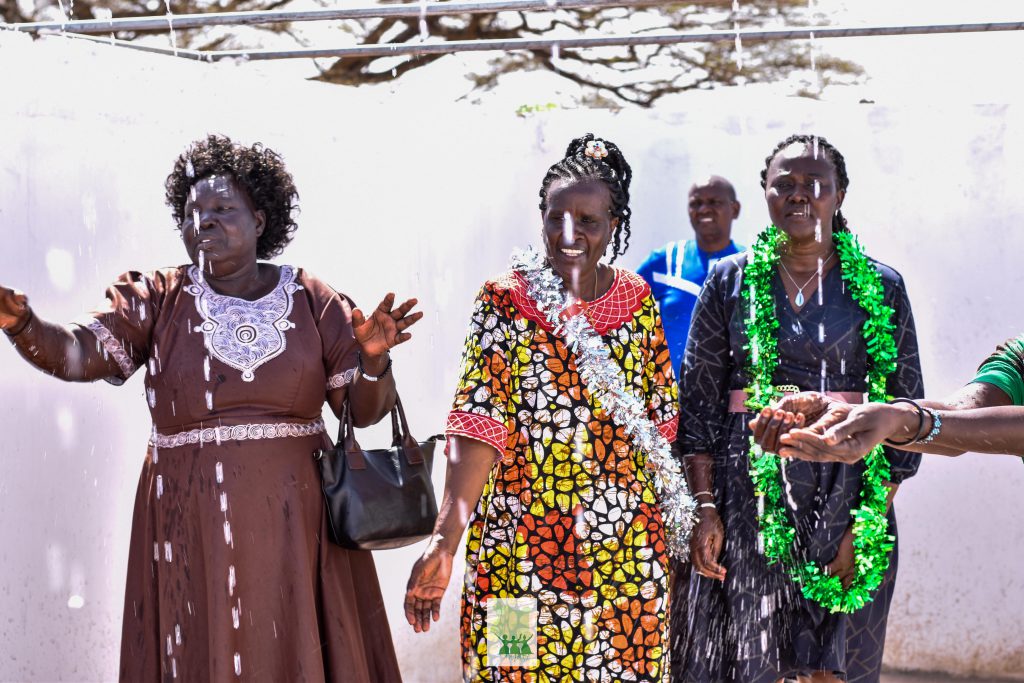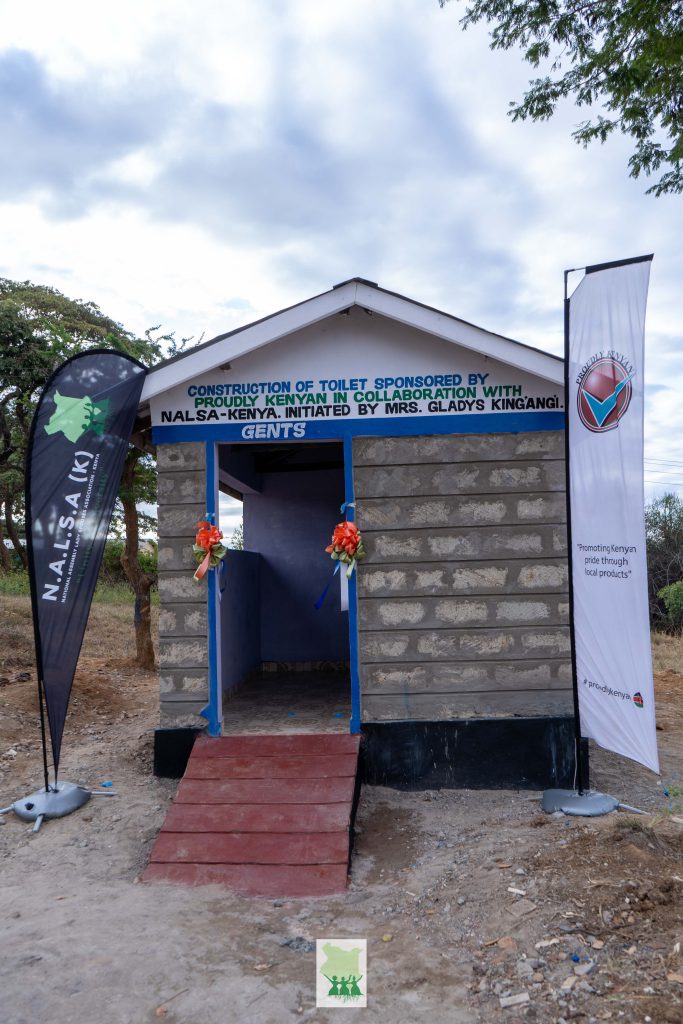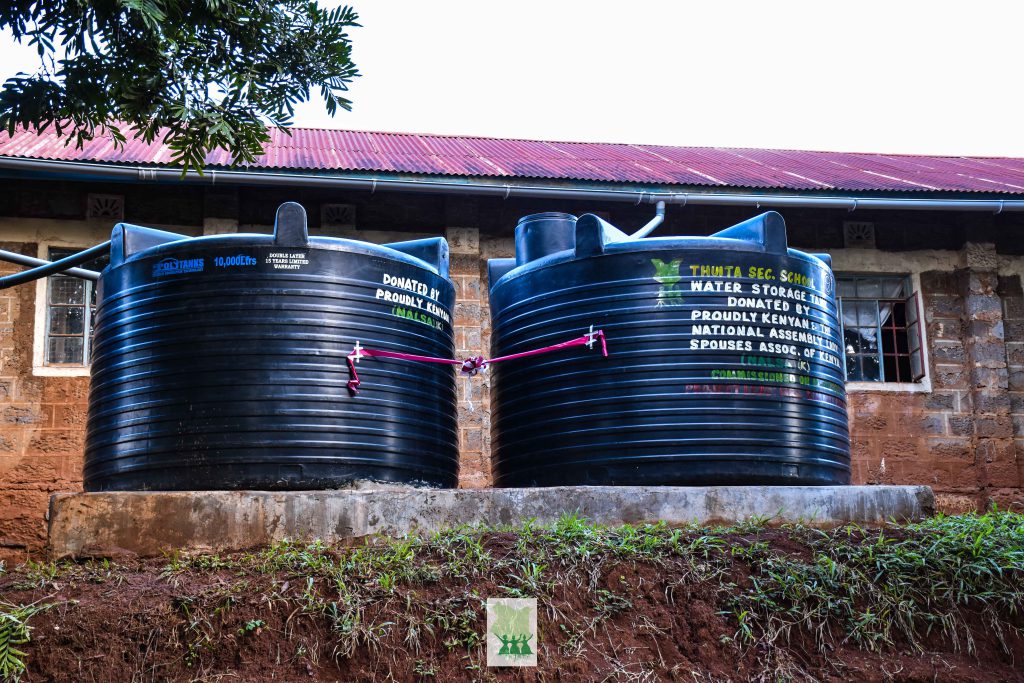Water Matters: Why NALSA(K) has focused on water projects

Despite it being a fundamental human right, too many people still have disproportionate access to clean and safe water and sanitation. Water.org estimates that 771 million people globally lack safe water, while 1.7 billion people don’t have a toilet.
In phase one of the projects implemented as part of the collaboration between Proudly Kenyan and NALSA(K), members implemented water and sanitation projects in seven constituencies across six counties.
We believe that clean water and sanitation should be a given for everyone; this access also benefits the individual and society. Some of these are highlighted below.
Improved health and sanitation
In Kenya, UNICEF estimates that 9.9 million people drink from contaminated water sources, while 5 million people practice open defecation.
In Mbeere South Constituency, which reportedly has a high case of waterborne illnesses resulting from open defecation and poor sanitation, Mrs Gladys King’ang’i implemented a project which saw two secondary schools and three primary schools get new lavatories. At Loyo Primary School in Turkana Central Constituency, the principal noted that students would drop out of school as they feared for their health. The school is one of two in the constituency that benefitted from a WASH project that included rehabilitating dilapidated washrooms, constructing new latrines, and donating handwashing kits, among other things.

Reduced Gender Inequalities
In homesteads where access to water is a challenge, women and children are typically the ones who bear the responsibility of fetching water. A UNICEF study found that women and girls globally spend 200 million hours a day fetching water. The amount of time spent walking to and fro collecting water means that women cannot maintain steady jobs, pursue skills training or education, and even spend time with their families.
There are also physical and health risks associated with fetching water. A typical jerrycan weighs up to 18 kilograms when full, and women and children typically walk long distances carrying these and often place them on their heads. Over time, this damages their backs and spines. Expectant mothers fetching water are also at high risk of developing complications with their pregnancies.
NALSA(K) members have donated water tanks to women’s groups and other vulnerable groups in different parts of the country. In Mbeere North, 50 women’s groups received a tank each, while in Nakuru West, the beneficiaries of tank donations were groups of women, youth, and persons with disabilities. A group of teen mums in the semi-arid Kaloleni Constituency received a 10,000-litre tank to collect and sell water for economic benefit. Finally, in Mwala Constituency, a borehole has been constructed as a reliable water source for the 25,000 residents of Kikaso-Kyeu village.

The Women and Water Ripple Effect Study shows that among other benefits of improved water access, more than 47% of women who were recipients of water access programmes could engage in entrepreneurship and other income-generating activities. Over 90% of these women saw an increase in their income. These are some of the changes we hope to bring to women in our society.
Education thrives
We’ve noted that collecting water for the household primarily impacts women and children. Lack of water in school can also detract from the time that students could use to study. Children use multiple hours that they could instead use to focus on studying, playing, and staying in school.
At Thuita Secondary School in Mathioya Constituency, students would start the school day by fetching water for cleaning and other work around the school. Mrs Priscilla Kimari implemented a water catchment system including roof gutters and 10,000-litre tanks to help solve this problem.

At Lodwar Mixed Primary School in Turkana Central, students reportedly sneak out to search for water in Lodwar Town when there’s a water shortage in school, posing a huge risk for them. Implementing the WASH project in the school has encouraged them to stay in school, and there’s even been an uptick in performance. Ten of the school’s students who sat for their KCPE examinations in 2022 managed to join national schools. The school has also seen increased retention and enrollment of students. Their headteacher reports that enrollment in 2023 shot up from 890 to 1800 students.
Girls have specific hygiene needs due to their menstruation. Access to safe water and sanitation in school is a factor that encourages them to attend classes even during their period.
We must do all we can to keep children in school and help them focus on their studies. Education gives children, especially those from rural communities, the chance to expand their opportunities and have a better quality of life.
Conclusion
One of the Sustainable Development Goals (SDGs) is that everyone will have access to clean water and sanitation by 2030. With seven years left to meet this deadline, billions worldwide are yet to have this basic human right fulfilled.
The water issue affects everyone; as such, everyone should play their part – big or small – to help move us one step closer to achieving SDG 6. Individuals, families, and communities can make a difference by managing their water use and consumption better. Governments, nonprofits, companies, and other organisations can partner to solve the issue on a larger scale.
As we celebrate World Water Day, we should commit to uniting so that everyone can enjoy the benefits of having access to safe water.
By Sophia Wanyonyi
